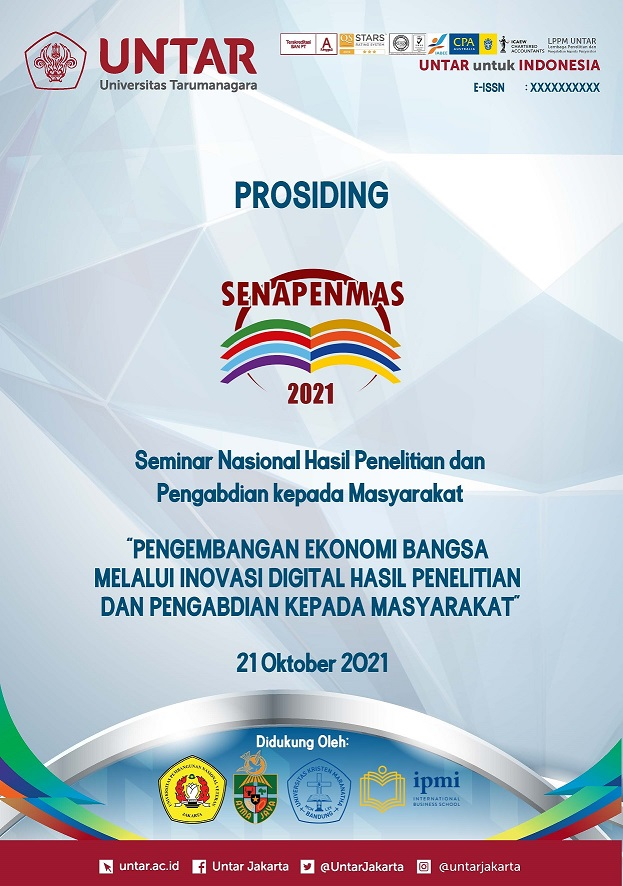PELATIHAN DAN PEDAMPINGAN PELAKSANAAN BASIC LIFE SUPPORT DI KALANGAN REMAJA
Main Article Content
Abstract
Basic Life Support (BLS) is an action to maintain the patient's life with the first step of rapid recognition to provide emergency ventilation and circulatory support in respiratory or cardiac cases. The quality of basic life support provided for cardiac arrest outside the hospital is often less than optimal and knowledge of basic life support skills in the general public, especially students, is not good. Based on the problems above, we conducted activities related to introduction accompanied by education in the form of basic life support training. The purpose of service activities related to basic life support is to introduce basic life support and improve student skills related to basic life support. The basic life support training service activity on Sunday, September 26, 2021, starting at 08.00-13.00 WIB, was attended by 76 participants consisting of 60 women and 16 men, aged 17-22 years old. Participants who participated in basic life support training as much as 72% had never attended training and 28% had attended training. The average pretest score on basic life support training was 58.77 and the posttest average score was 68.42. So based on the results of the pretest and posttest that have been carried out by the basic life support training participants, there was an increase of 16.41%, with this the service activities that we carried out had increased the knowledge of participants who took part in basic life support training.
Bantuan Hidup Dasar atau Basic Life Support/BLS adalah suatu tindakan untuk mempertahankan hidup pasien dengan langkah pertama pengenalan cepat untuk memberikan ventilasi darurat dan dukungan sirkulasi dalam kasus pernapasan atau jantung. Kualitas bantuan hidup dasar yang diberikan pada serangan jantung di luar rumah sakit seringkali kurang optimal serta pengetahuan keterampilan bantuan hidup dasar di masyarakat umum khususnya mahasiwa kurang baik. Berdasarkan permasalahan di atas kami melakukan kegiatan PKM terkait pengenalan disertai edukasi berupa pelatihan bantuan hidup dasar. Tujuan kegiatan pengabdian terkait bantuan hidup dasar adalah memperkenalkan tentang bantuan hidup dasar serta meningkatkan keterampilan mahasiswa terkait bantuan hidup dasar. Kegiatan pengabdian pelatihan bantuan hidup dasar pada hari Minggu tanggal 26 September 2021, dimulai dari pukul 08.00-13.00 WIB, diikuti 76 peserta terdiri dari 60 perempuan dan 16 laki-laki, berusia 17-22 tahun dapat berlangsung dengan baik. Peserta yang mengikuti pelatihan bantuan hidup dasar sebanyak 72 % belum pernah mengikuti pelatihan dan 28 % sudah pernah mengikuti pelatihan. Nilai rata-rata pretest tentang pelatihan bantuan hidup dasar sebesar 58,77 dan Nilai rata-rata posttest-nya adalah 68,42. Maka berdasarkan hasil pretest dan posttest yang telah dikerjakan peserta pelatihan bantuan hidup dasar terjadi peningkatan sebesar 16,41%, dengan ini kegiatan pengabdian yang kami lakukan telah menambah pengetahuan peserta yang mengikuti pelatihan bantuan hidup dasar.
Article Details
References
Gates S, Quinn T, Deakin CD, Blair L, Couper K, Perkins GD, et al. (2015). Mechanical chest compression for out of hospital cardiac arrest: Systematic review and meta-analysis. Resuscitation. 94: p. 91-7. https://www.resuscitationjournal.com/article/S0300-9572(15)00310-X/fulltext#secsect0040
Hasselqvist-Ax I, Riva G, Herlitz J, Rosenqvist M, Hollenberg J, Nordberg P,et al. (2015).Early cardiopulmonary resuscitation in out-of-hospital cardiac arrest.. N Engl J Med,. 372(24): p. 2307-15. DOI: 10.1056/NEJMoa1405796
Katerina B , Andrej Š,Monika Š , Gordana A , Marija A , Aleksandra P, Taša L , Jasminka P. (2019). Cardiopulmonary Resuscitation Performed by Trained Providers and Shorter Time to Emergency Medical Team Arrival Increased Patients Survival Rates in Istra County, Croatia : A Retrospective Study." : 325–32DOI:10.3325/cmj.2019.60.325
Lee, K, (2012).Cardiopulmonary resuscitation: new concept. Tuberc Respir Dis.. 72(5): p. 401-8. doi: 10.4046/trd.2012.72.5.401
Nishiyama C, Brown SP, May S, et al. (2014). Apples to apples or apples to oranges? International variation in reporting of process and outcome of care for out-ofhospital cardiac arrest. Resuscitation;85:1599–609. https://doi.org/10.1016/j.resuscitation.2014.06.031
Perkins GD, Handley AJ, Koster RW, Castren M, Smyth MA, Olasveegen T, et al. (2015) European Resuscitation Council Guidelines for Resuscitation 2015: Section 2. Adult basic life support and automated external defibrillation. Resuscitation, 2015. 95: p. 81-99. http://dx.doi.org/10.1016/j.resuscitation.2015.07.015
Sasson C, Rogers MA, Dahl J, Kellermann AL. (2010). Predictors of Survival From Out-of-Hospital Cardiac Arrest. Circ Cardiovasc Qual Outcomes. Jan;3(1):63-81. doi: 10.1161/CIRCOUTCOMES.109.889576https://pubmed.ncbi.nlm.nih.gov/20123673/
Shemie SD, Gardiner D.(2018).Circulatory Arrest, Brain Arrest and Death Determination. Front Cardiovasc Med, 5: p.15.doi: 10.3389/fcvm.2018.00015


